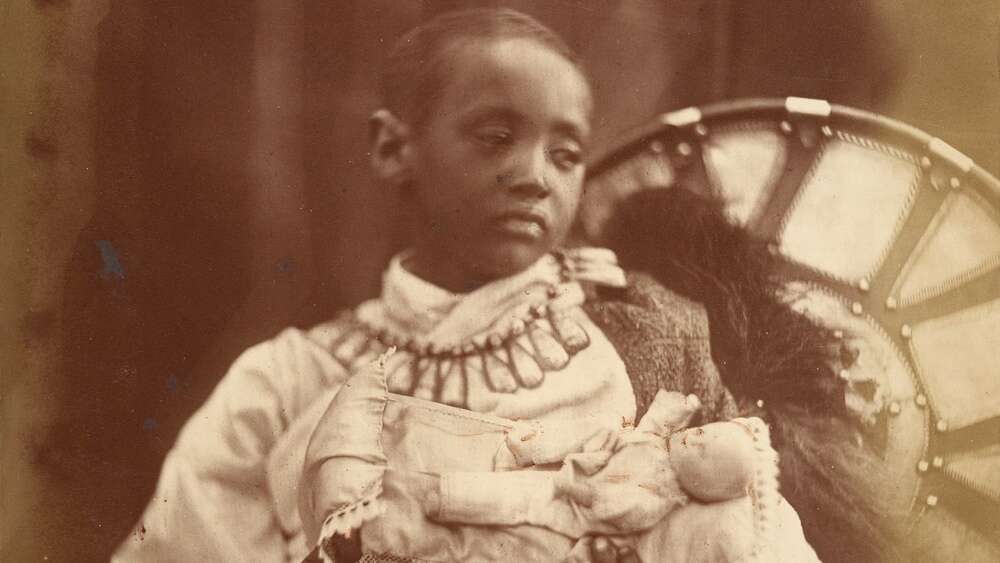Pressure mounts on British Museum to return Ethiopian church treasures
There are renewed calls for the British Museum to return sacred artifacts to the Ethiopian Orthodox Church that were stolen more than 153 years ago. The items in question are nine wooden and stone tabots (or tablets) looted following the Battle of Maqdala in 1868.
Several prominent people joined the chorus on Monday, sending a letter to the British Museum’s trustees. According to the UK’s Guardian newspaper, the letter’s co-signatories included: George Carey, former Archbishop of Canterbury; Sir Harold Walker, former British ambassador to Ethiopia; actors Stephen Fry and Rupert Everett; and lauded poet Lemn Sissay.
“We believe that today the British Museum has a unique opportunity to build a lasting and meaningful bridge of friendship between Britain and Ethiopia by handing the tabots back to the Ethiopian Orthodox Church,” the authors wrote.
Under the British Museum Act of 1963, the museum is forbidden from restituting objects in its collection. Consequently, the museum’s conversations with Ethiopian officials – which have been happening since at least 2004 – have centred on a possible long-term loan of the sacred artifacts.
But in a new legal argument published on Monday and cited by the letter’s authors, Samantha Knights QC argues that the tabots are “unfit to be retained” under the 1963 Act because they are not on public display.
The latest efforts to push the British Museum to return the sacred treasures to Ethiopia is just one of many such calls to museums across the world, which are facing increasing criticism over their collections. Some of the ethical questions considered are how items were acquired, who owns them (or should own them), whether displaying them is culturally appropriate, the best location for a collection, and who benefits from it.
These are not new questions, of course. Yet while critics might once have been a minority who could be more easily ignored or dismissed, now they represent such a broad consensus, that museums need to devote significant resources to managing them. Significantly, this process now often leads to the restitution (or return) of items.
How Maqdala’s Orthodox Church treasures ended up in the British Museum
Originally made to sanctify churches in the region, the Maqdala tabots represent the Ark of the Covenant, which housed the Ten Commandments and signified God’s presence on earth.
Maqdala – also transliterated as Maqdale or Magdala – was a mountain-top fortress in northern Ethiopia that was the seat of power for Emperor Tewodros II. During his reign in Maqdala, Tewodros established a library and treasury and dedicated a new church. Tewodros conducted military campaigns, attempting to bring the whole country under his control. During these conquests, he collected books, holy relics, and manuscripts from churches throughout Ethiopia, hoping to establish Maqdala as a seat of learning and research.
In the 1860s, relations between Britain and the Emperor of Ethiopia (then known as Abyssinia) deteriorated. Britain had previously sought to influence politics in the region for its own benefit. In 1862, with instability in Ethiopia threatening his rule, Tewodros sent a request for help with military training to various world leaders, including Britain.
While Tewodros addressed his British request directly to Queen Victoria, it was not passed on to the monarch. Instead, it was ignored by British officials, making Tewodros furious.
In response, he imprisoned the British consul and in the following years took various other European hostages (including missionaries). Britain sent multiple emissaries to negotiate their release, but Tewodros refused.
Reports of these events in the British press sparked a public uproar, prompting the British government to commit to a large-scale military action on Maqdala.
In 1867, Britain sent a 13,000-strong cohort of British and Indian soldiers led by Sir Robert Napier to Maqdala, with the aim of freeing the British hostages and punishing Tewodros. They conducted a massive military assault the following year, destroying Tewodros’s fortress and freeing the hostages. Hundreds of Tewodros’s troops were killed and thousands wounded in the invasion. Tewodros committed suicide during the assault rather than be taken as a prisoner.
In the battle’s aftermath, British soldiers and the newly released hostages looted Maqdala’s fortress and church. Afterwards, many of the objects they had taken were reassembled and sold to generate “prize money” for the troops.
“While celebrated in Britain by many at the time, the destruction and pillaging of Maqdala also had fierce critics. Most notably, the British Prime Minister William Gladstone criticised the plundering of Maqdala as a reprehensible and lamentable episode,” explains the British Museum on its website in a special section for “contested objects”.
“Very grieved & shocked to hear by telegram that good Alamayou had passed away this morning … All alone, in a strange country” – Queen Victoria, journal 14 November 1879
So how did the loot get from Maqdala to Britain?
The museum’s website also notes that Richard Rivington Holmes was a part of the military contingent, serving in the curious official role of “archaeologist”. Holmes was an assistant in the Department of Manuscripts at the British Museum.
Holmes’ official role in the military campaign was, it turns out, to be one of the principal buyers at the auction of looted spoils. Hence, he returned to the UK with a great haul of treasures, including more than 300 manuscripts, regalia, sacred vessels and liturgical equipment from the imperial treasury, library and church at Maqdala.
In addition to Holmes’ haul, the British Museum obtained some Maqdala treasures from the Secretary of State for India in 1868. Other items came from the private collection of Captain Tristram Speedy – a British explorer employed by the Ethiopian Emperor Tewodros until they fell out.
Speedy had also served Britain as an interpreter in the Battle of Maqdala. He was appointed guardian to Prince Alemayehu (or Alamayu or Alamayou) Simeon – Tewodros’s only son – when his mother’s died soon after the battle. The British allege Speedy’s guardianship was in accordance with his late father’s wishes. This claim, however, is disputed by some Ethiopians.
The child had a privileged British upbringing, with Queen Victoria herself one of his benefactors. He died of pleurisy at 18 years of age. The Queen wrote of his death in her journal that she was “very grieved & shocked to hear by telegram that good Alamayou had passed away this morning. It is too sad! All alone, in a strange country, without a single person or relative belonging to him […] Everyone is sorry.”
She arranged for Alemayehu to be buried at Windsor Castle, where his body remains, despite repeated requests from Ethiopian officials to return his body to his homeland that continue until this day.
Photographs of the young prince and one of his necklaces also form part of the British Museum’s collection.
The fight to return the nine tabots
Of all the priceless Maqdala treasures looted by Britain from Ethiopia in 1868, the tabots are the most sacred. Accordingly, the British Museum has gone to great lengths to care for the items, housing them in a special room created and maintained in close consultation with the Ethiopian Orthodox Church.
While initially kept in an anonymous storage facility, the tabots were moved about 30 years ago to a sealed storeroom in the basement of the Bloomsbury complex of the museum. Each tabot is said to be individually wrapped in purple velvet and stored on a shelf.
In 150 years, the tabots have never been on public display. The museum has made no images of the tabots and does not permit students and scholars to study them. Museum staff are not allowed even to enter the room because it is sacrilegious for them to view the sacred objects. Only Ethiopian church clergy are permitted access to the sacred treasures.
But, as Richard Brooks noted in 2019, “without wishing to sound facetious, there are not very many such clerics in and around London to see them.” The Association for the Return of Maqdala Ethiopian Treasures makes a similar point.
“Given the sacred nature of the tabots, Museum staff have promised never to put them on display. The gesture is appreciated. But it raises the question of why the Museum is insisting on holding on to exhibits that it can never show,” it asks.
Ironically, the museum’s unique treatment of the tabots is what Samantha Knights QC now argues makes them “unfit to be retained” under the British Museum Act.
The British Museum has said that “discussions with Ethiopian partners concerning the Maqdala collections are continuing and the Museum is actively invested in these. Alongside these discussions, the Museum is also committed to thorough and open investigation of Maqdala collection histories, and engagement with wider contemporary dialogues within which these collections are positioned. This includes fully acknowledging and understanding the military collection history which directly led to the Museum’s Maqdala collections.
“The Museum is committed to working collaboratively with professional colleagues, members of the Ethiopian Orthodox Church, academics and communities associated with Ethiopia more widely to share knowledge, extend understanding and explore new perspectives on the collections from Maqdala.”
Email This Story
Why not send this to a friend?





